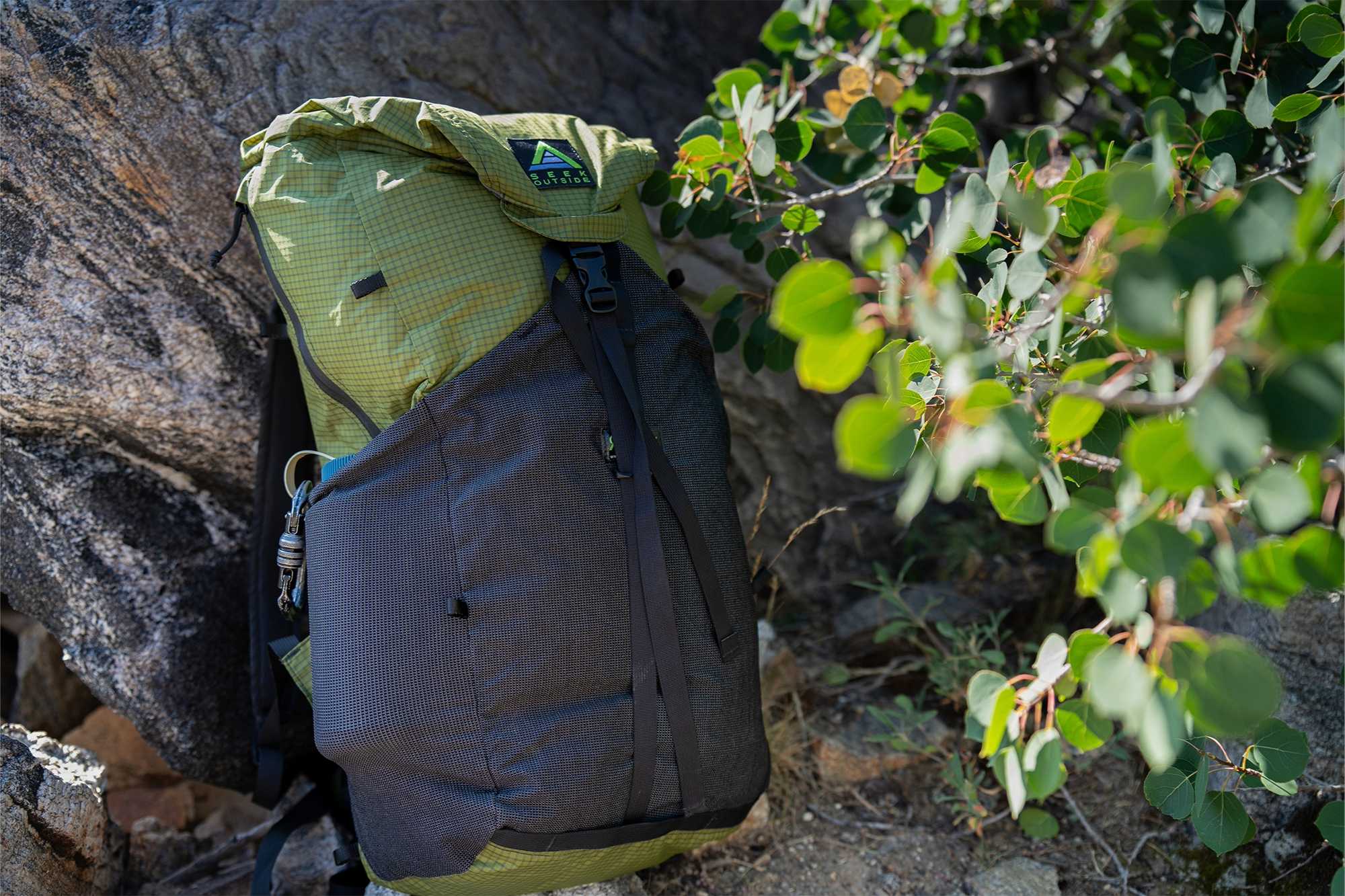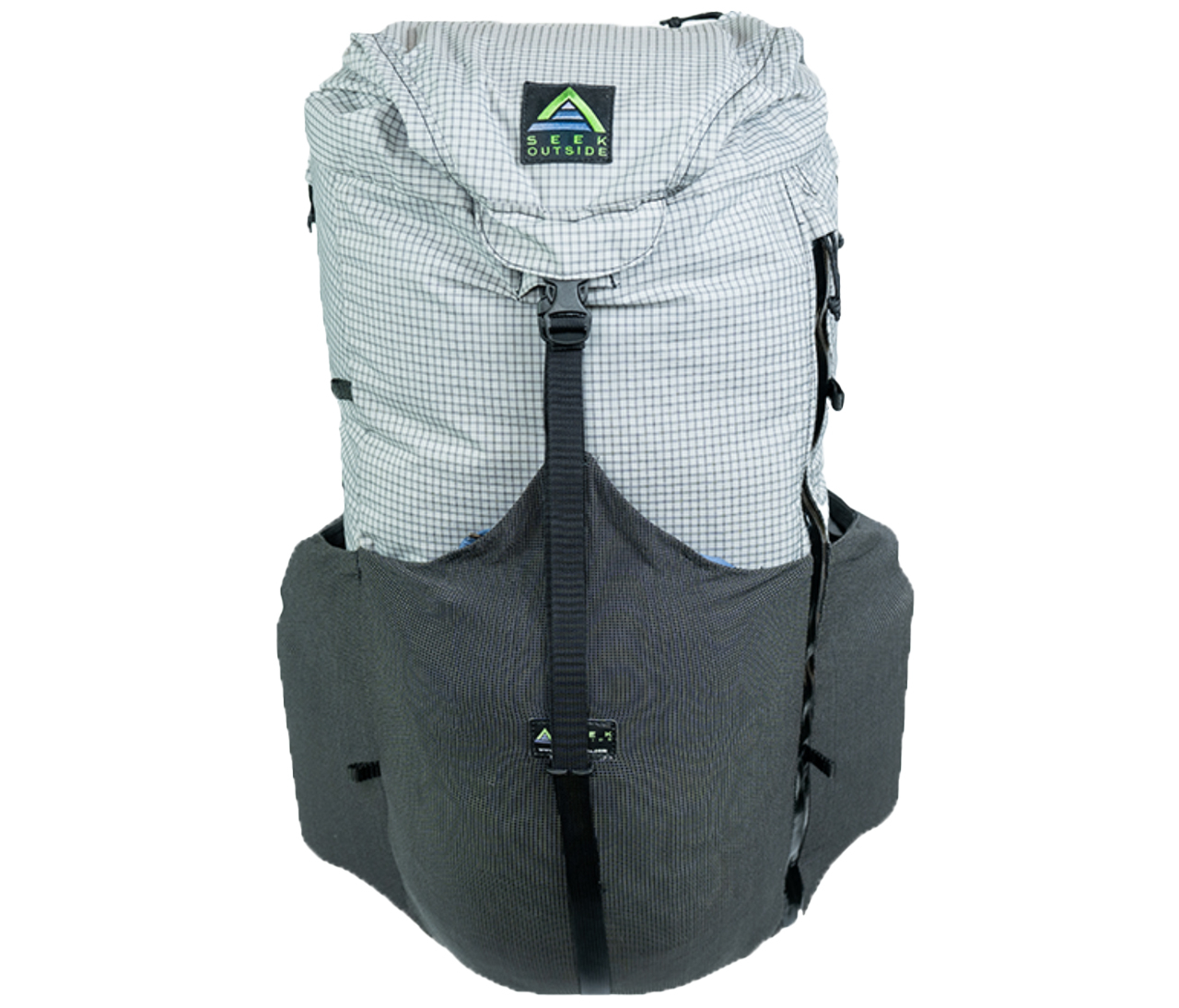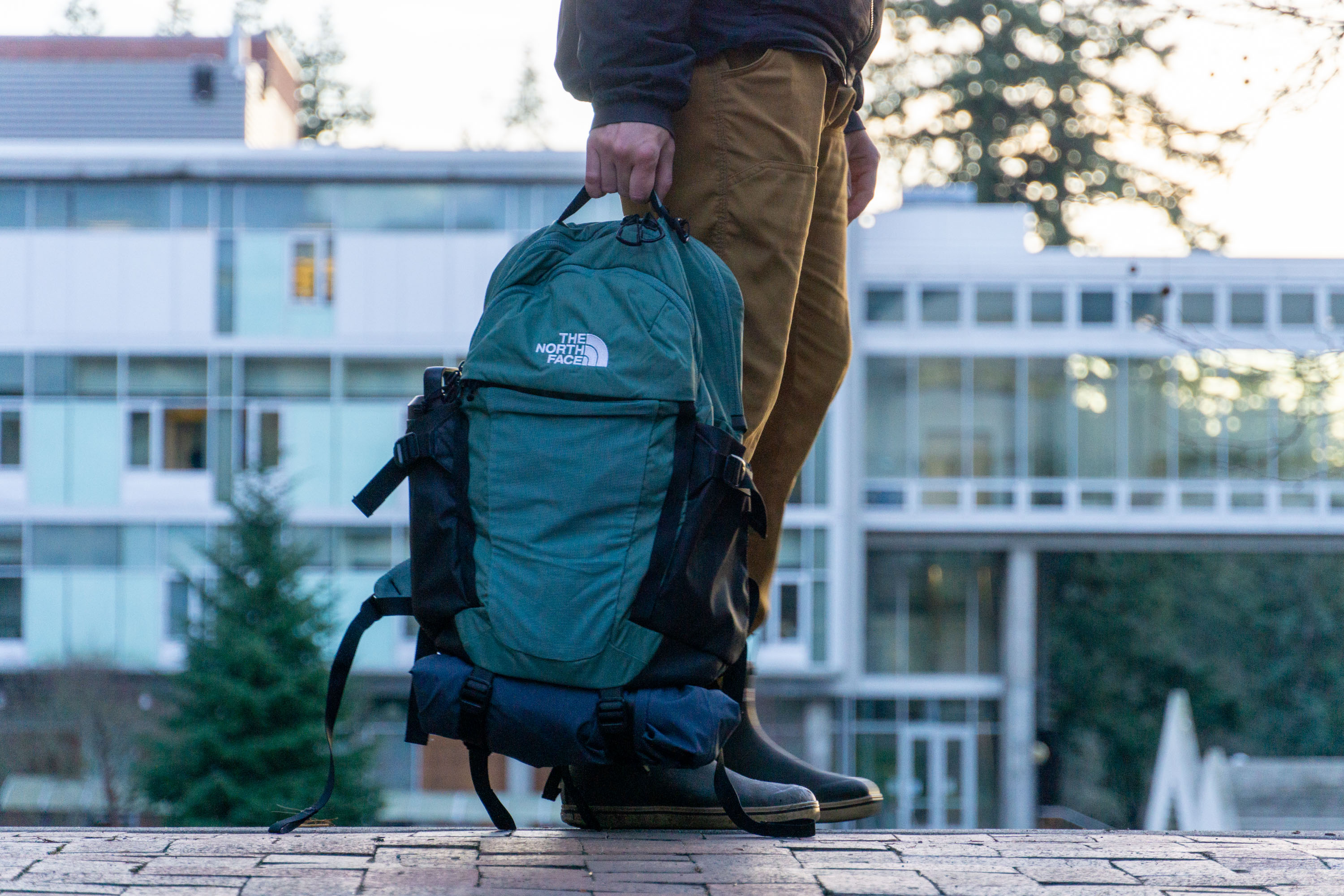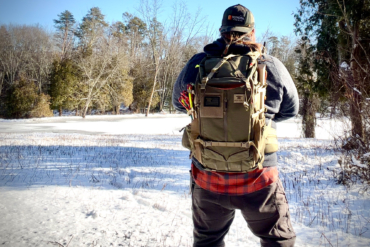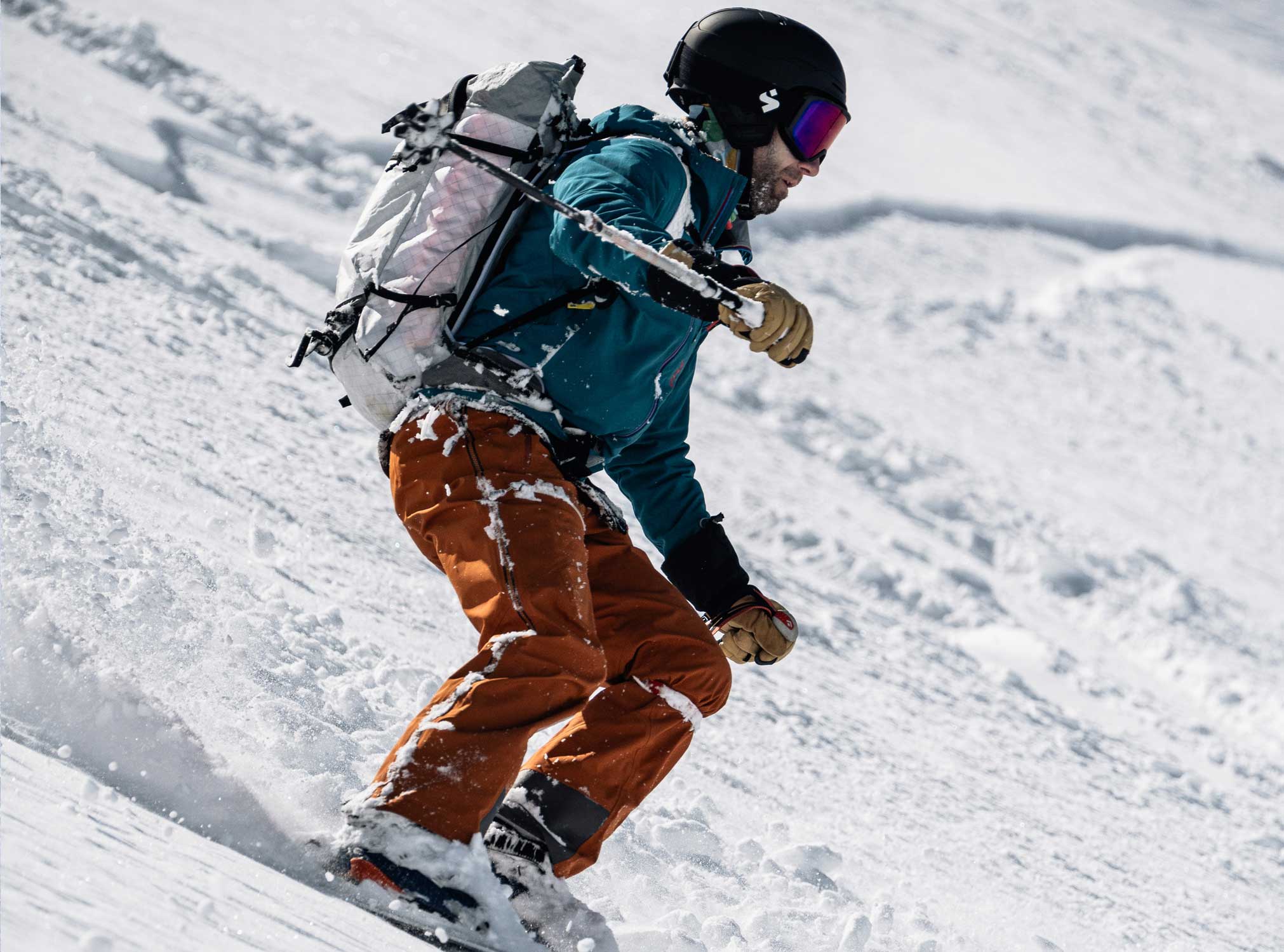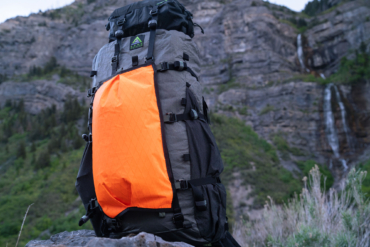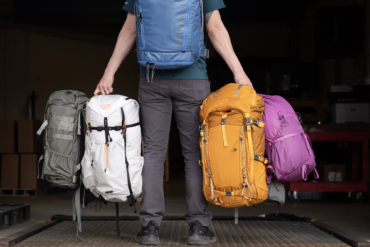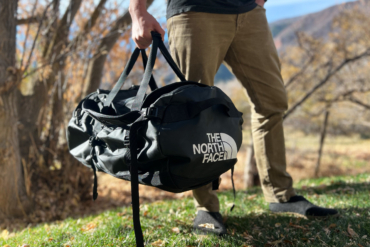I have too many day packs. Some days, choosing one feels like a choice between six of one and half a dozen of the other. But the Seek Outside Silverton 2300 hit me like a breath of fresh air.
By the standards of ultralight day packs, the Silverton 2300 is well-made, though not revolutionary, with a high-tech ultragrid fabric and minimalist suspension. The frontal and topside main compartment access, beefy UltraStretch pockets, quick-remove frame, and squat design earn high marks in gear accessibility, abrasion resistance, and bicycling-friendliness.
Really, though, it’s the compatibility with Seek Outside’s external Revolution frame that tips the scale for this pack. Being compatible with one of the market’s heaviest-hauling external frames adds serious utility. Between rucking for wildland firefighting training and already regularly hauling inflatable kayaks up to alpine lakes with a Revolution, this is a very versatile pack setup.
The question was: how well does this clever design justify a nearly $350 price tag?
In short: The Seek Outside Silverton 2300 Pack has ample quick gear access, robust construction, and a squat design that earn it plenty of extra credit in rough country and for cyclists. It earns solid middle marks in comfort as a standalone day pack once you get north of 25 pounds. But it’s also compatible with one of the beefiest and most customizable external frames on the market, making big, heavy loads much easier to carry.
Looking for a new ultralight pack? Check out how the Silverton 2300 compares to the rest of the options out there in our Best Ultralight Backpacks Buyer’s Guide.
- Weight: 2.19 lbs. with frame, 1.75 lbs. without
- Volume: 2,300 cu. in./38 L
- Sizing options: One size fits all. Reasonable torso range: 15.5-18.5”
- Frame: Removable plastic frame sheet
- Our recommended carry capacity: 10-15 lbs. without frame. 18-22 lbs. with. 40-60 lbs. in pack with external frame
- Construction: Ultragrid main body, with UltraStretch pockets and YKK Aquaguard zippers
Pros
- Ultralight
- Multi-configurable
- Shoulder strap daisy chains for accessories
- Durable fabric and pockets
- Good gear accessibility
- Cycling-friendly
Cons
- Price
- Standard configuration taps out light
- Full value requires a separate Seek Outside frame
- Narrow shoulder straps
Seek Outside Silverton 2300 Pack Review
Fabric & Construction
The Seek Outside Silverton 2300 is built around a fixed frame sheet. Seek Outside claims that it was designed around an average 17-inch torso length. My midsection is a few hashes north of 18 inches, and I found it to fit pretty well. So, despite its fixed length, I’d say it can comfortably fit a torso 1-2 inches on either side of that, provided you keep the weight light.
Fabric-wise, the Silverton is largely made with Ultragrid. This ripstop weave has 210-denier recycled nylon and 200-denier UHMWPE (same as Dyneema, with a different generic name). How does it stack up to other in-vogue fabrics like Ultra 200?
Both fabrics are relatively new to the market. However, the general consensus is that Ultra 200 has greater abrasion resistance. Some have reported that the interior layer of Ultra 200 delaminates from its waterproof backing over the long term. (Although Ultra 200x beefs up the backing to minimize long-term wear.)
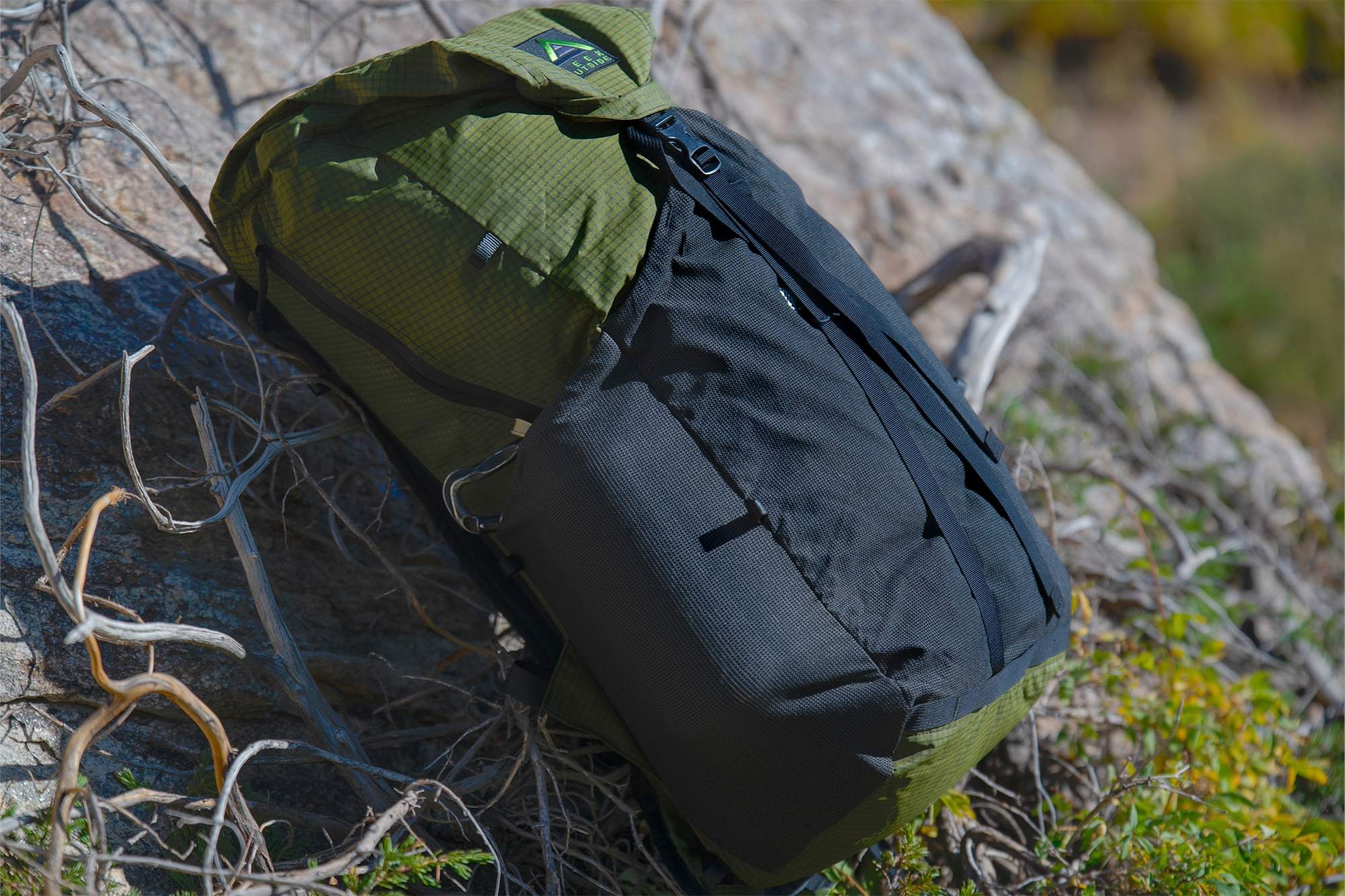
UltraGrid (which the Silverton is made of) absorbs more water and is less abrasion-resistant. Nevertheless, its ripstop construction prevents holes from growing too large. Likewise, delamination and seam degradation are likely less of an issue compared to fabrics like Ultra 200. Simply put, it’s a long-lasting ultralight fabric.
The Silverton also opts for durable zippers and pockets. YKK AquaGuard zips add extra water resistance. The UltraStretch pockets, made from a combination of nylon, Lycra, and UltraPE, though heavier, are a big step up in durability from the stretch pockets of most ultralight packs.
Layout and Gear Access
The Seek Outside Silverton 2300’s side pockets have more than enough space for two 1L Smartwater bottles. However, two Nalgenes would be a squeeze. Accessing water while the pack was on my back could have been easier, but that changed depending on how much I had stuffed into the side zip pockets.
The Silverton’s long side pockets might cut into mesh storage, but they do offer a bit more protection and organization. For a 38L bag, this makes sense. It’s an in-between size where extra compartmentalization is pretty useful.
The front mesh pocket on the Silverton is a bit more spacious than the pockets of Mystery Ranch’s Coulee line. It’s also considerably more durable. Despite dragging this pack around alpine lakes and leaning it up against plenty of rough rocks over the last 2 months, the mesh shows no signs of wear.
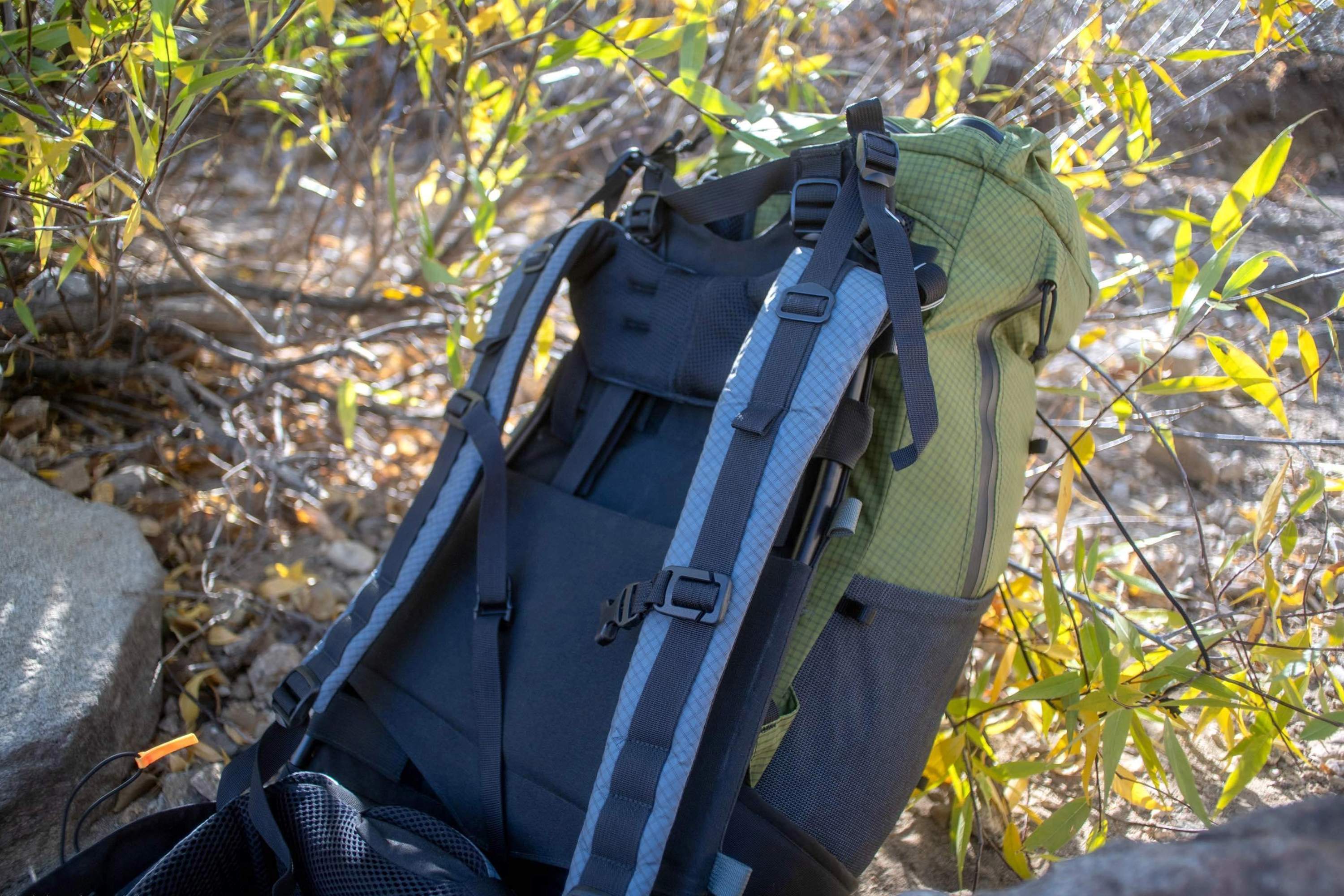
Mounts for gated compression straps round out the external gear storage. I did find myself wishing for an option to route lower straps underneath the side mesh pockets, though.
Internally, the pack is pretty simple. It’s one wide, cavernous hole with a frame sheet held by one Velcro flap. There is one small zip pocket and a hydration sleeve for a 2-3L bladder.
In my opinion, the cinchable foldover flap top feels a bit weird. Compared to having a separate cinch top and lid, it took a little more positioning to ensure the cinched flap was properly positioned relative to the opening for rain protection. However, for such a design, the lid offered a surprising amount of space.
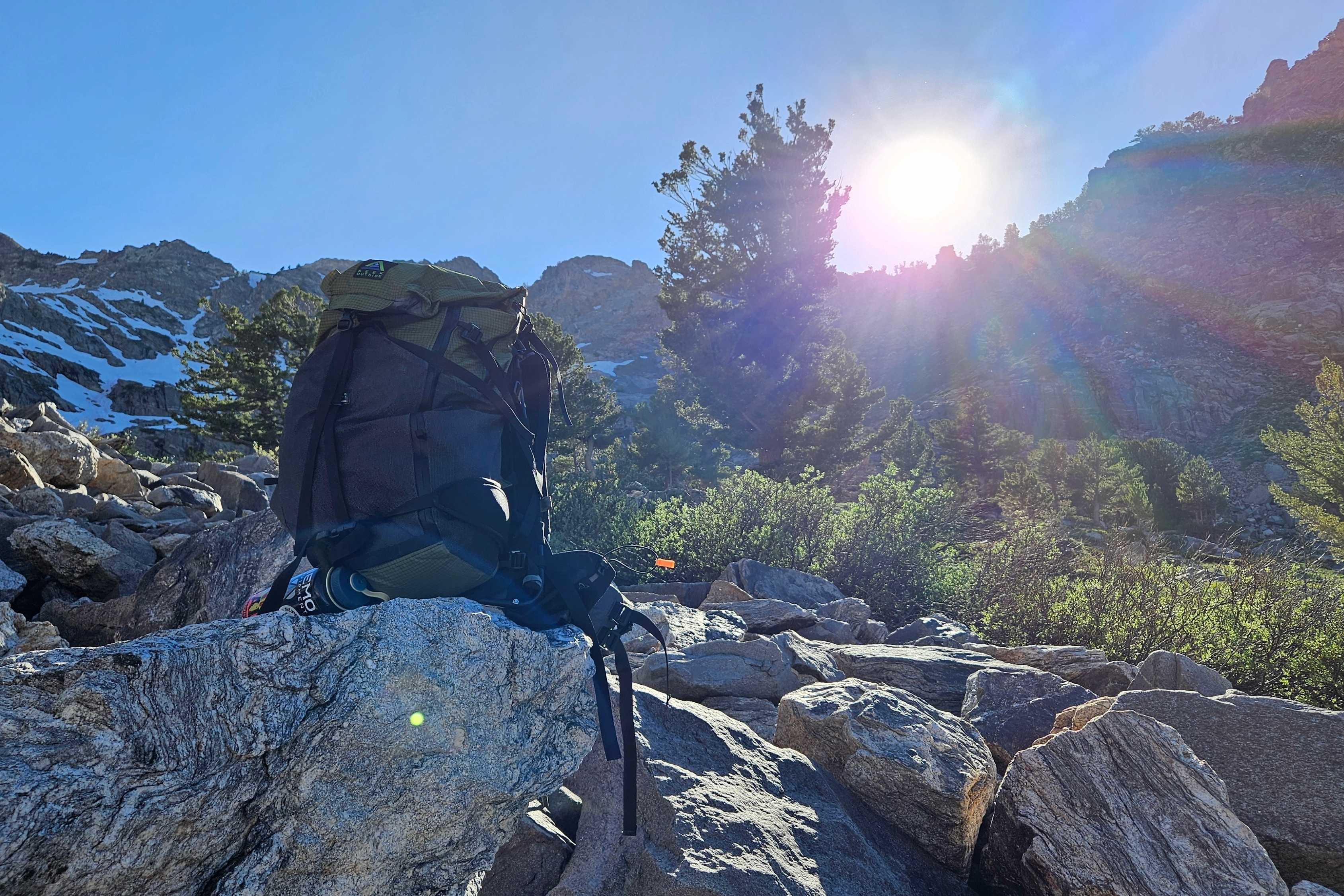
Likewise, as someone who considers frontal gear access essential, the combination of short height and a frontal zipper is always a dream. I still prefer top-to-bottom frontal zips over partial slits. However, the squat construction offsets the short height of this extra access hole.
Carry Comfort
Daisy chains down the shoulder straps make attaching accessories simple. Likewise, under light loads, the padded ridges down the back are comfy.
However, at over 25 pounds, the Silverton starts to show its weight class pretty quickly. One of the things it lost in its weight cut was the width of its shoulder straps. The hip belt, too, has little reinforcement.
Overall, this makes the shoulder strap a bit bitey under more significant loads. My chest tends to push smaller straps into folding and pinching at the shoulder, so this may have been exacerbated somewhat.
Indeed, the Silverton is more than adequate for weight-conscious hikers on day or overnight trips, especially for warm-weather loadouts. On desert hikes, with a water bladder and basic gear, the frame sheet flexed comfortably, and the straps carried their load well.

When I tried to push the limits of overnight capacity, I felt the corner of the plastic 30-cal ammo can holding my camera kit starting to bite into my back. Though, I didn’t feel it as much as the 40-pound loadout pinching my shoulders.
For someone whose main day pack has been a Mystery Ranch Radix 31, I felt I’d been spoiled for the last few months by a bevy of padding and a stiffer frame. Even so, 38 L is a sweet spot: more than enough for a day trip. And anyone leaning on it for an overnighter is probably more than weight-conscious enough for the Silverton to do the job.
Cycling Capability
As a diehard cyclist, I believe that any good day pack, whether EDC or hiking, ought to perform well as a cycling backpack, as well. After all, while there are six ways from Sunday to kit out a bike for bikepacking and commuting, few match the flexibility and cost-effectiveness of the following equation: rear rack and bag + frame pack + handlebar bag + a backpack.
Here, the Silverton earns high marks.
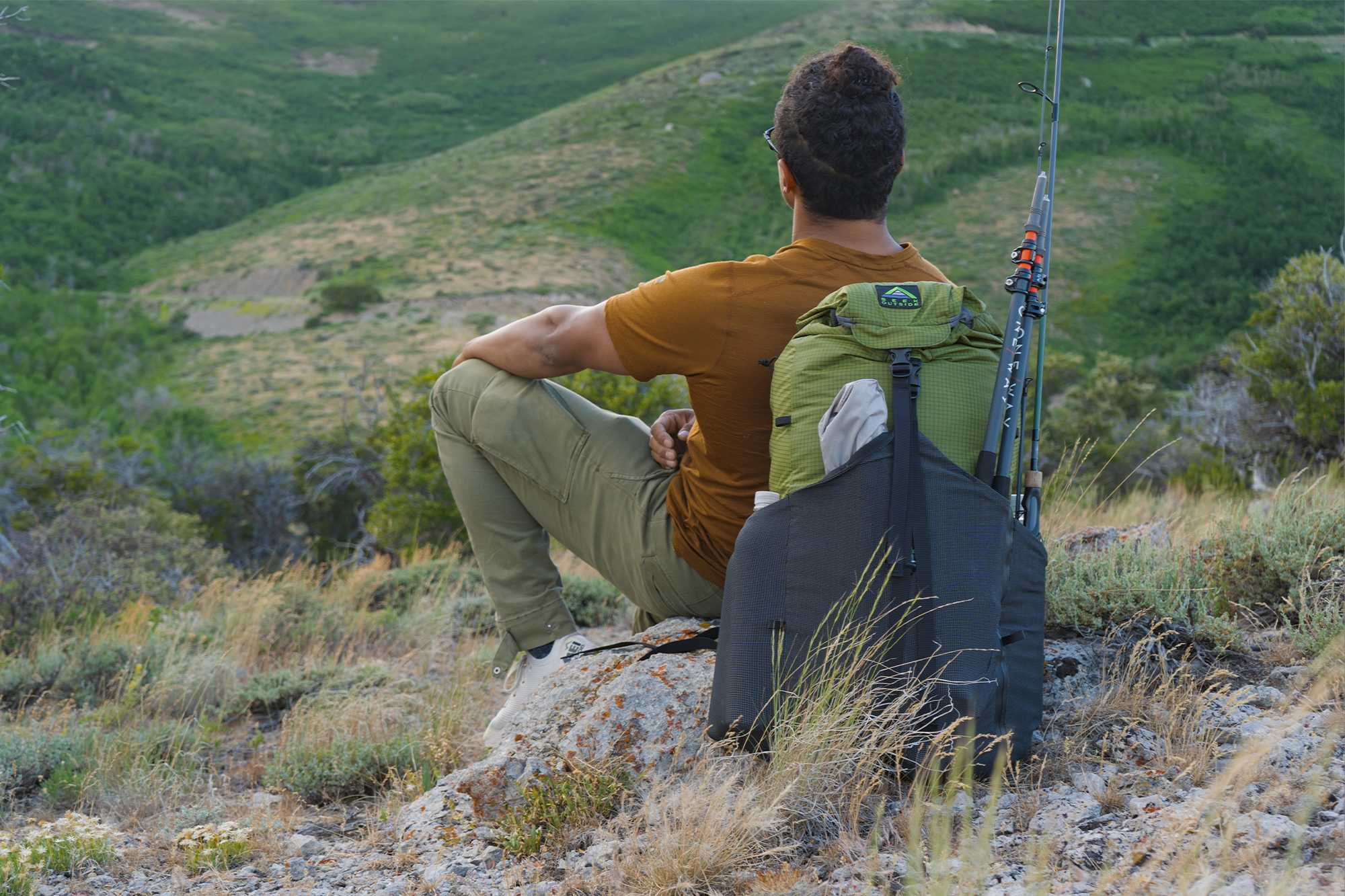
Tall frames jam into the back of your neck or helmet on a bike. The Silverton’s squat height meant I never had issues with the frame jamming into the back of my head.
If I wanted to remove the frame, perhaps for extra space in the water bladder, the Silverton made it faster and easier than any other pack I own. (Although, if I did want to ride frame-free but bring the frame with me on a bikepacking trip — for, say, day trip hikes along the way — it would be harder to pack away on a bike than frame stays.)
I normally prefer a detachable waist belt, but the Silverton’s isn’t. I found it slight enough not to feel constrictive and thin enough to clip it backward, around the pack itself — essentially making it an extra compression strap.
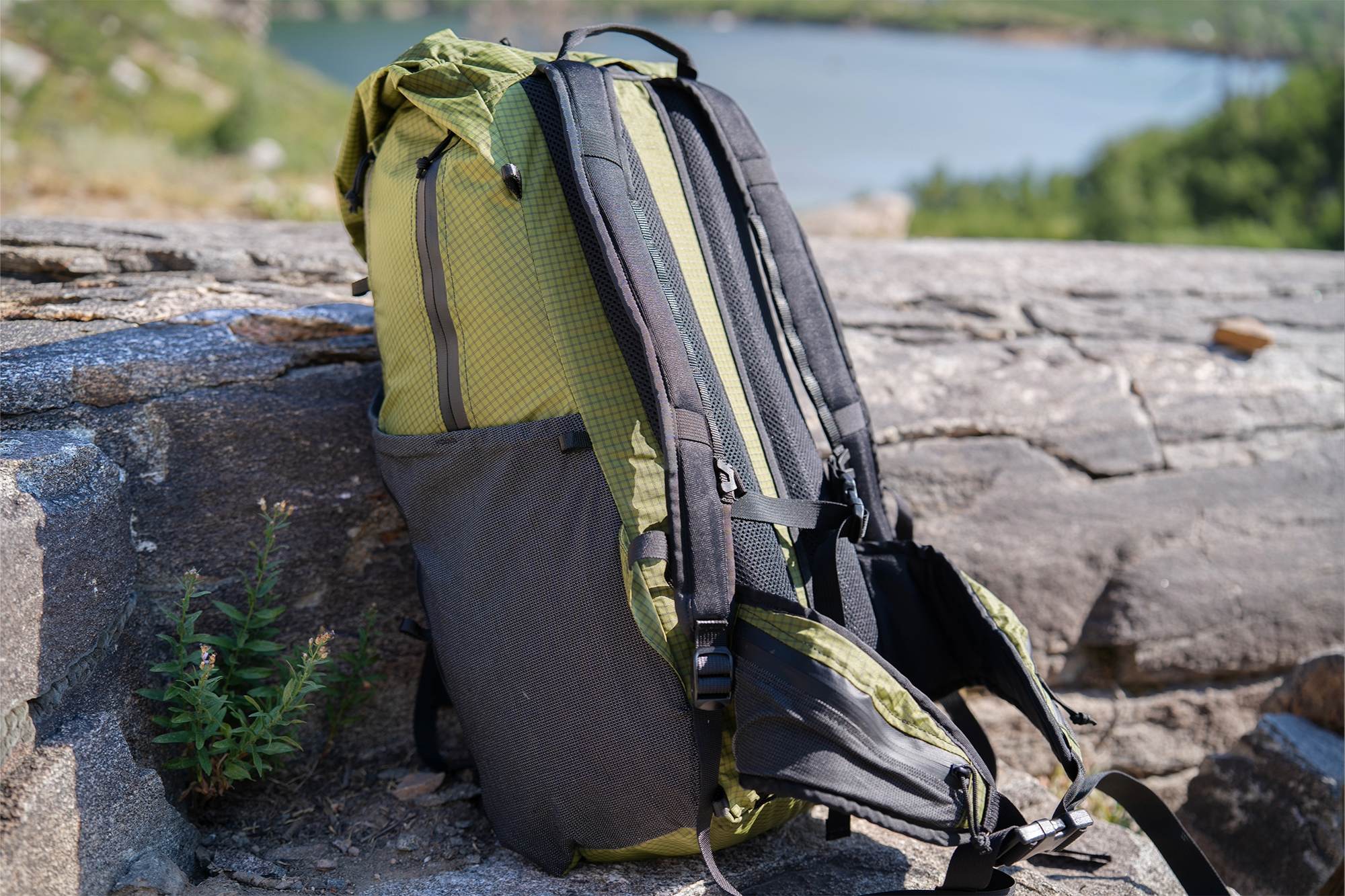
Frontal access is a personal must-have, especially as a photography enthusiast. If I need to grab something out of a pack while still on the bike, being able to sling it off one shoulder to grab an item makes life easier.
The Silverton’s frontal zip made accessing items in the main compartment easy. On my bike, I could sling it around and quickly grab items like my camera.
Full Frame Firepower
The Silverton is an interesting pack in and of itself. However, its full value really comes in combination with Seek Outside’s Revolution external frame ($345). The Revolution is among the heaviest-hitting external frames on the market.
Mystery Ranch makes its Terraframe, and KUIU makes the Spread Tow carbon fiber frame. I’ve carried both. So, where does the Seek Outside Revolution rank?
It’s made with aluminum tubing instead of the in-vogue carbon fiber. It’s a stiff frame that absolutely lives up to its 200+ pound rating. The Revolution is immensely configurable in both storage and fitting. But it rewards a dialed fit, becoming much more comfortable with fine-tuning.
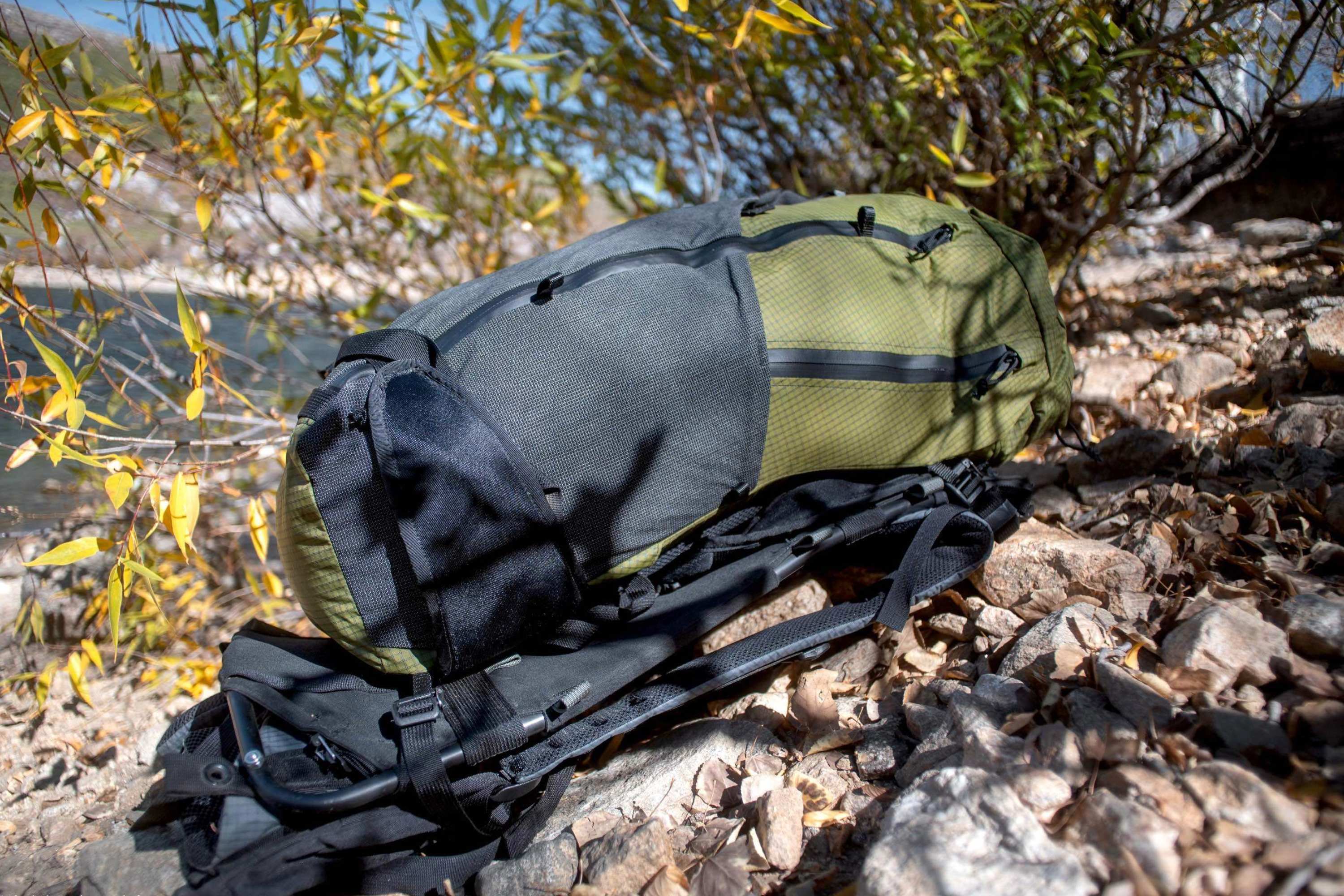
I found this out while hiking an inflatable raft up to an alpine lake in Northeast Nevada with my Silverton/Revolution combo. With the kayak strapped to the frame, the Silverton easily swallowed all of my paddling and fishing gear.
This pack itself was more than enough for a day or overnight trip. If I wanted to use it with the Revolution for rucking, I could chuck a few water bladders in for weight. If I needed to pack odd-shaped objects (e.g., fishing, kayaking, packrafting, or astronomical gear), the frame gave extra space for cinching it down.
Hell, the Silverton-Revolution combo offers more than enough real estate here to accommodate long trails. Call me an external frame Luddite, but I’d have no qualms about tossing my camp in the Silverton, strapping a bear canister to the frame below it, sandwiching a bladder betwixt pack and frame, and setting off down the PCT. #externalframepacksforthewin
Seek Outside Silverton 2300: Costly, Configurable Conclusions
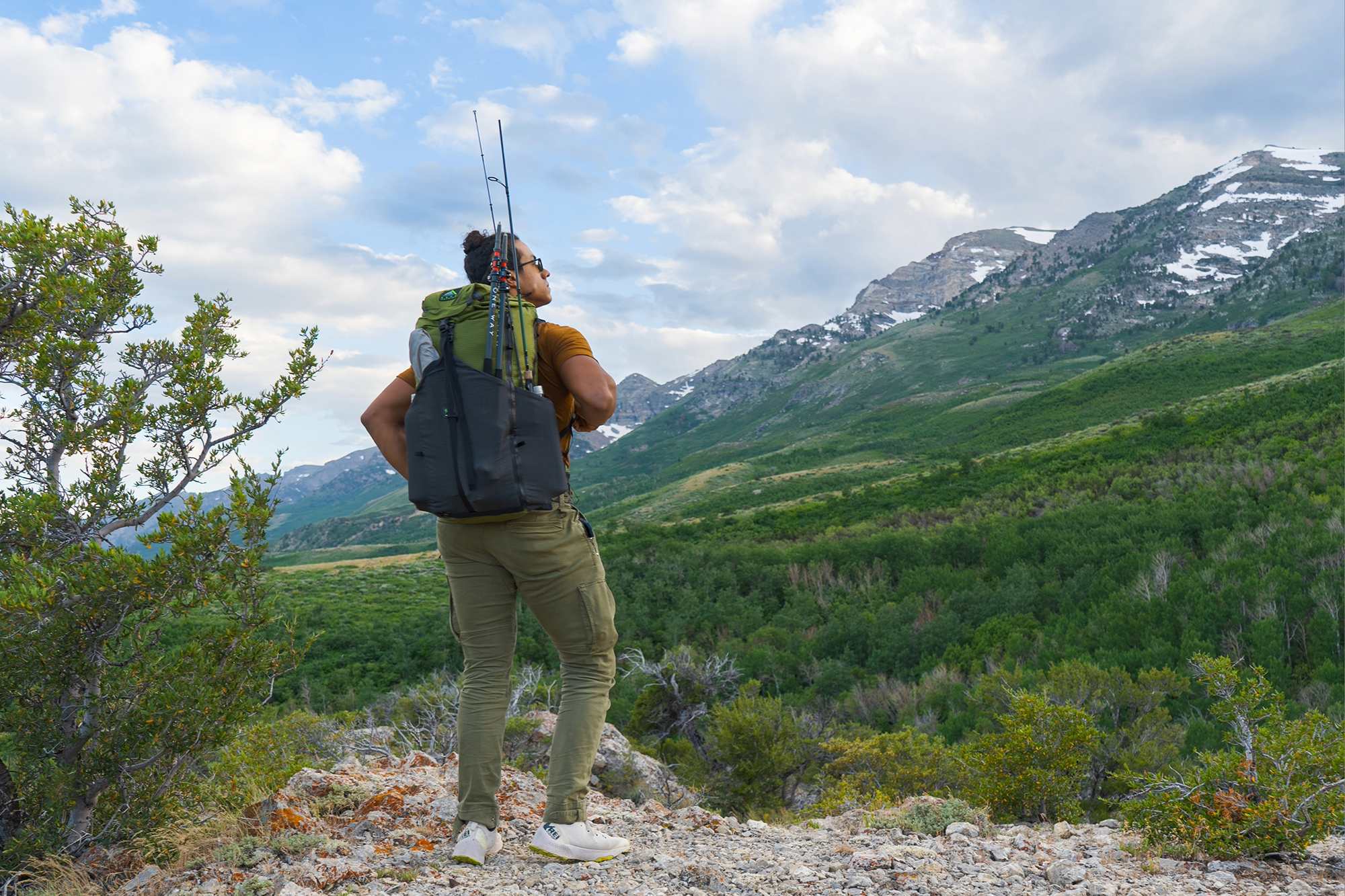
This pack isn’t just a day pack. It’s also an overnighter, a cycling pack, a weekend pack for dedicated ultralighters. For the weight-conscious, it offers unmatched versatility. And, if you’re willing to shell out for one of the heaviest-duty external frames on the market, it is also a viable backpacking, hunting, and paddling bag as well.
However, the Silverton is already $350. The Revolution external frame is another $345. For many people, $695 for a pack system is a tough sell. The question becomes, is a long-lived jack of all trades, though master of none, worth it to you?
The answer was easy for me. In a land of alpine lakes and canyon rivers with few good pullouts, my Silverton is now constantly prepared for inflatable kayaking trips — a role it flexes into seamlessly. But in the trunk right next to it is a Seek Outside 100L Goshawk that I can hot-swap onto the Revolution frame as well.
Sometimes I like precisely kitting out a jack of all trades. Sometimes I like chucking a bunch of gear into one big, beefy bag. This pack allows you to do both.
